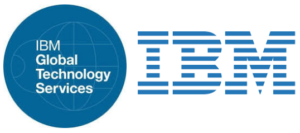IBM Global Services: A Case Study in Predictive Analytics

Use Case: A Global parts and services company has branches with teams all over the world. Providing efficient servicing for these teams requires the coordination of Service Level Agreement (SLA) constraints, part availability from hundreds of downstream, supply chain vendors, and the available staff, taking into consideration union and federal regulations. It desires a system that uses Predictive Analytics to create an optimal schedule.
- The service must be the least disruptive to existing system, requiring minimal integration to APIs and other endpoints.
- The system must be capable of receiving call center data, and creating an optimal schedule for fulfillment.
- The system must be capable of then pushing the created schedule to the appropriate user’s mobile schedule.
- The system must be able to provide accurate travel time and arrival information, taking into account traffic and current weather conditions.
- The system must be able to provide a pool of employees in the event that a slotted employee becomes unavailable.
- The system must be able to negotiate part availability and delivery with a non-normalized set of vendors.
- The system must be able to parse and understand the rules and constraints of an SLA, and applies these considerations to the schedule.
- In the event of a near-SLA breach, the system would begin communicating with other vendors and/or contacting backup employees in order to mitigate the breach.
- Prior to any breach, all concerned parties would be notified.
- The system must be fault-tolerant, with graceful failover functionality.
- The system must be capable of asynchronous communication.
Solution: Create a plug-n-play system leveraging the Truly Asynchronous Messaging Environment (TAME) architecture. This system receives call center data via form submission, then creates an agent that instantiates a rules engine to negotiate the terms of the SLA. Another agent begins assembling an employee pool, while a third will begin negotiating part delivery from third-party vendors. These actions happen independently, and are capable of providing intermittent status updates as they make progress on their tasks. The Google Traffic API is integrated to provide accurate real-time traffic and road conditions, as well as optimal routing information. Once an optimal schedule has been determined, and the part availability verified, the schedule is pushed to the technician’s calendar for fulfillment.